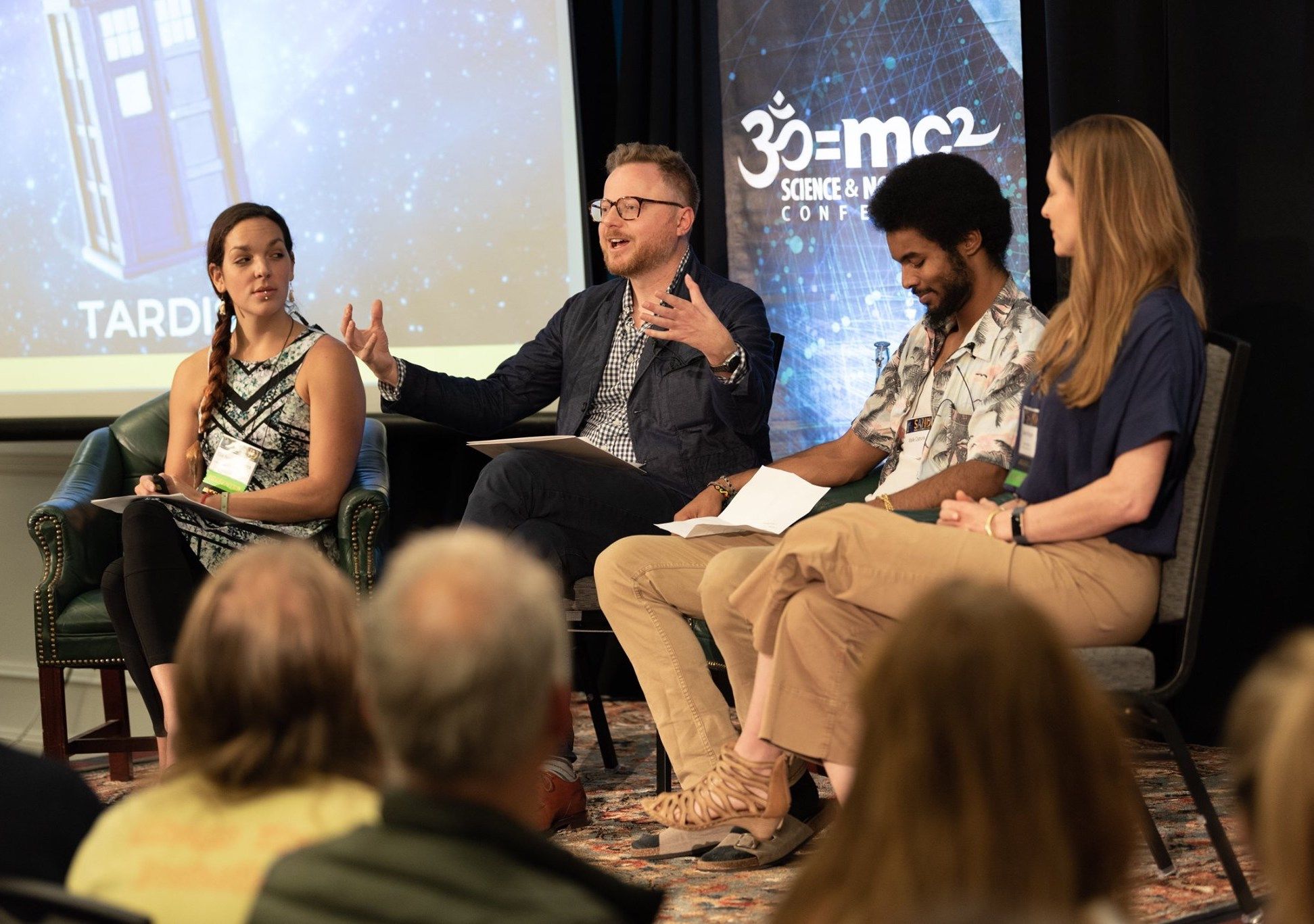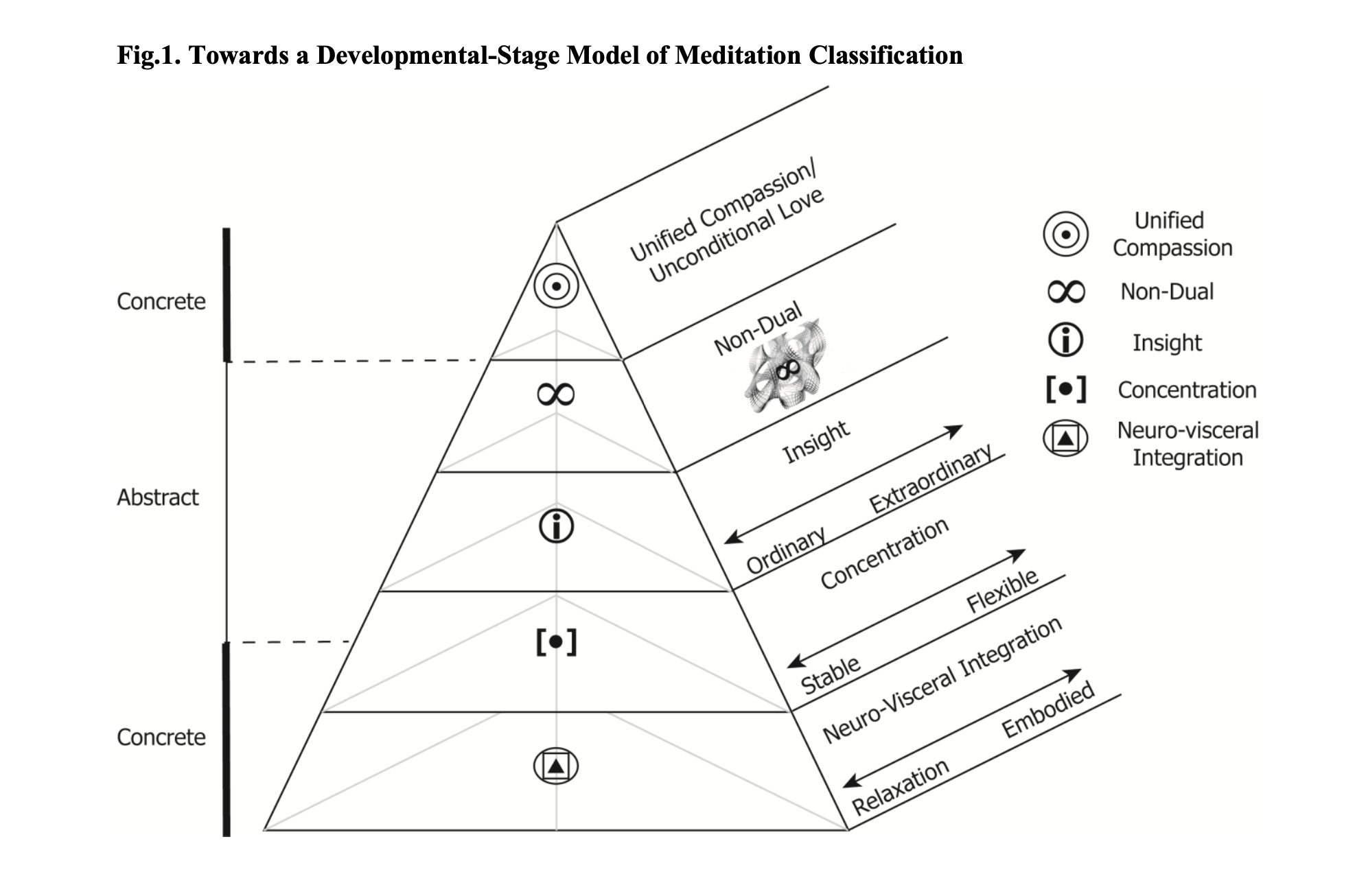The Science of Unconditional Love
Exploring the frontiers of science and education.

A couple of years ago I presented on behalf of Peace in Schools at the Science and Nonduality conference.
I was co-presenting about mindfulness in education with Caverly Morgan, Gia Naranjo-Rivera, and Malik Cistrunk.
Caverly has been a friend, colleague, teacher, and champion of mine. She’s a former Zen monk, contemplative teacher, and the founder of Peace in Schools.
Gia is a genius researcher from Johns Hopkins University. Her research on Peace in Schools was perhaps the first global study to measure both the impact of mindfulness and the foundations of trauma (Adverse Childhood Experiences) in humans. Gia is like a one-person research team and received not one, but two Johns Hopkins awards for her study.
Malik is a former Peace in Schools student, whose story with mindfulness was featured in the short film Into Light, which I helped produce. Malik is a brilliant mind, a hiphop artist, an educator, and a heartful community advocate and activist.
There’s a story here connected to the imaginal. A few days before the presentation I had a dream and on awaking wrote down an inspired reflection. When I spoke with Gia, I shared that while I’d prepared a more conventional presentation segment, I’d written this new piece, and I was uncertain whether to share it.
Gia, as she has so often done for me, encouraged me to trust in the dream, and the feeling of inspiration that came with it.
So I trusted in something that felt risky — around which I had much doubt about sharing — and included the reflection inspired by the dream in my presentation. The audience seemed to really resonate as they applauded at the end of my segment. It was a great lesson for me in trusting into the imaginal.
The things that are most deeply authentic for us may be the very same things that we most deeply question and doubt.
Now, this post is titled the science of universal compassion, so let’s get into that. Here’s a slide I shared at the presentation.

Okay, if you’re a supernerd like me, you might be blown away like I was. If not, let me share a little about why I love it. First of all, you can read the research paper in which it appears yourself. The paper is titled, "Mapping Meditative States and Stages with Electrophysiology: Concepts, Classifications, and Methods". It was published in a special issue of the journal Current Opinion in Psychology focused on mindfulness. Out of the 57 papers, this one really caught my eye.
What’s so cool about it is that the authors, Poppy Schoenberg and David Vago, run the Contemplative Neuroscience and Integrative Medicine Laboratory at Vanderbilt University. The premise of the paper is that while there’s been some great foundational brain science done on mindfulness, the brain science needs to get way more complex and multidimensional to really capture what’s going on.
It has really geeky gems like this passage below, which feels like it's coming from about a hundred years in the future:
Brain science already embraces the utility of a 4D space “hypersphere torus” to understand brain function (Tozzi & Peters, 2016). This concept suggests that complex mental states and functions (e.g. the ability to connect past, present, future events in a single coherent mental kaleidoscope) are embedded in an “imperceptible” fourth spatial dimension of brain, which can be quantified via Borsuk-Ulam Theorem (BUT) and applied to intrinsic, low frequency, spontaneous oscillatory activity (Tozzi & Peters, 2016), i.e. resting states network dynamics, opposed to task-evoked activity. These trends suggest that the optimal experimental design involves decomposing spontaneous brain signals into co-variation patterns providing feature vectors in 4D hypersphere torus space during EEG rest vs. meditation state/s. In this vein, recent computational applications utilizing algebraic topology (the mathematics describing networks with non-local/zero-phase/non-linear spaces/structures) identified ~11 dimensions of brain (Reimann et al., 2017). Such findings shed light on synaptic transmission, the underlying mechanisms of EEG signals, whereby graphical networks relaying information flow are constructed, revealing incredibly intricate topological connectivity in local neuronal assemblies within the neocortex, whereby input/stimuli are processed by binding neurons into “cliques” of increasingly higher dimension (the more neurons within a clique, the higher the dimensions), as a specific class of cell assemblies, or “cavities” (high-dimensional holes)that guide correlated activity (Reimann et al., 2017).
The promising trajectory for a poly-dimensional approach to examining EEG substrates of meditation seems bound to a multiverse paradigm of the brain and its function, in alignment with a conceptual and methodological ontological classification system (initiated here) describing macro-and micro-level properties of discrete progressive-stage mind training/s and states.
What?! This is wild and powerful science. And gives me hope! When I wrote about the imaginal world as existing in a higher dimensional reality, this is the kind of science that I believe is exploring the same territory.
And of course, that amazing slide I shared above. Why is it amazing? Because it validated everything I learned firsthand from teaching high school kids with Peace in Schools: that when you talk and educate about unconditional love with humans, that’s what resonates most deeply in their own being. It’s what they say matters most to them too. It’s a profound thing to be in a room full of high school students, all of us in a circle, having just finished an activity in which we explore a deep expression of unconditional love, and feel the whole room united by that shared value.
Teens have a reputation of being challenging. And rightly so, they’re challenging the messed up system created by adults as they find their identities. One of my students, Maddi, she’s in the "Into Light" film too, said she was cynical about the idea of love before she joined the class. But when you get an amazing variety of students all sharing in the direct experience of unconditional love in a high school classroom, you start to believe that the world of human beings might be able to realize the fullness of its potential.
Last part of this story. A man sitting in the front row came up to me after the presentation and said, “I know that slide well. That Schoenberg and Vago paper from the special issue on mindfulness was the most significant paper in the journal. I have a phone call with the authors next week.”
We had a nice chat later on at the conference and I’d always meant to call him to hear about how the conversation went. I still hope to talk to him. And to tell him about ally work, a practice which I feel can really help us realize the embodiment of unconditional love.
Image: Science and Nonduality/Vineet Teames Photography
